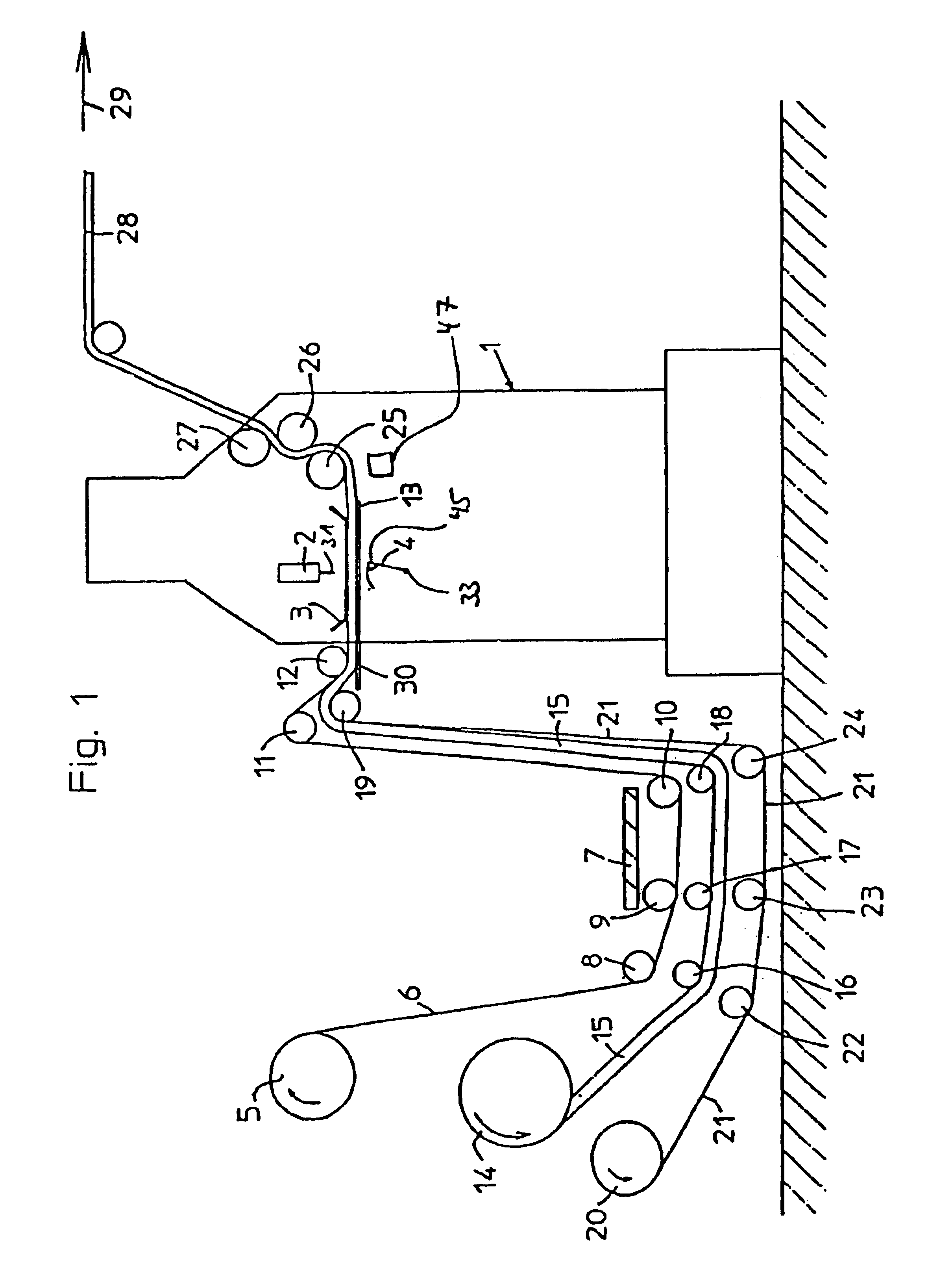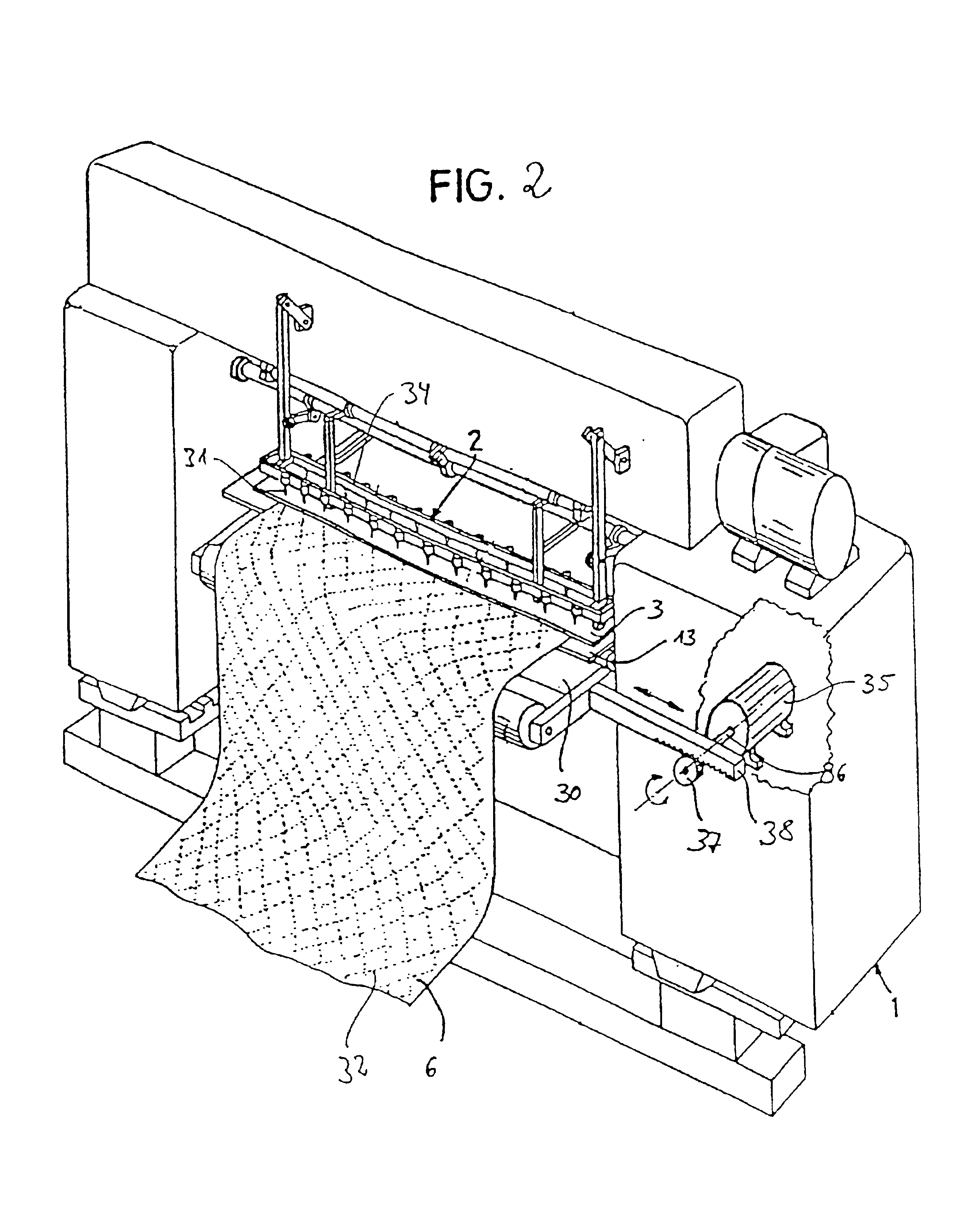Chain stitch multi-needle quilting machine and method to create a pattern in a quilting material
a multi-needle, quilting machine technology, applied in the field of chain stitch multi-needle quilting machine and method to create a pattern in the quilting material, to achieve the effect of relatively shor
- Summary
- Abstract
- Description
- Claims
- Application Information
AI Technical Summary
Benefits of technology
Problems solved by technology
Method used
Image
Examples
Embodiment Construction
[0030]A chain stitch multi-needle machine according to FIGS. 1 and 2 comprises a machine stand 1 with a needle bar 2 in the upper section with the single driven needles 31 are essentially being arranged side by side vertically to the focal plane. Sign 3 marks a common pressure foot, 4 a looper row according to needle row 2. A needle plate 13 or a sewing table is located below the layers of the quilting material fitted together in the quilting area. This needle plate 13 serves as quilting material support.
[0031]The quilting material consists of an upper layer 6, for example fabric, ticking or something similar and is pulled off a storage roll 5 and guided below a catwalk for the operator around deflection rollers 8, 9, 10, 11 and 12 into the quilting area, that is into the area between pressure foot 3 and the needle plate 13 or the quilting material support.
[0032]This layer 6 of the quilting material consists of inelastic material. In addition, the quilting material comprises a furth...
PUM
 Login to View More
Login to View More Abstract
Description
Claims
Application Information
 Login to View More
Login to View More - R&D
- Intellectual Property
- Life Sciences
- Materials
- Tech Scout
- Unparalleled Data Quality
- Higher Quality Content
- 60% Fewer Hallucinations
Browse by: Latest US Patents, China's latest patents, Technical Efficacy Thesaurus, Application Domain, Technology Topic, Popular Technical Reports.
© 2025 PatSnap. All rights reserved.Legal|Privacy policy|Modern Slavery Act Transparency Statement|Sitemap|About US| Contact US: help@patsnap.com



